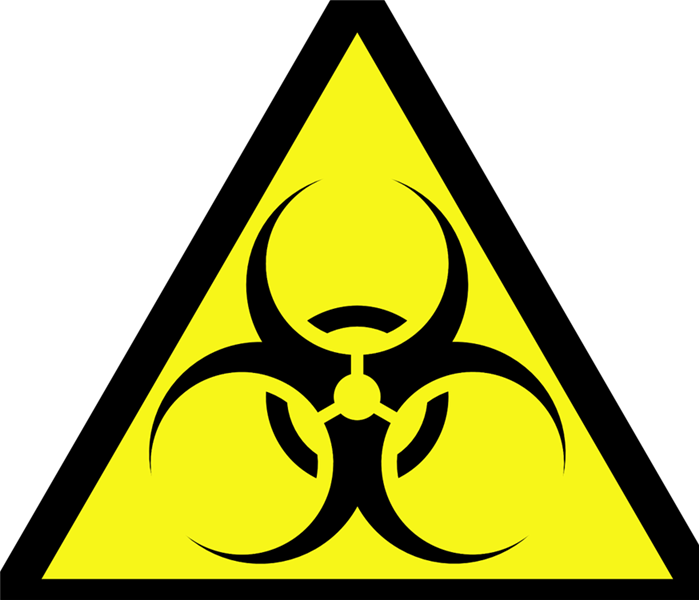What is a bio-hazard?
10/18/2019 (Permalink)
Biohazards are described as any biologic or chemical matter that is harmful to the environment, animals, or human-beings. This includes body liquids, human blood, and tissue, plus recombinant DNA.
Biohazards have the potential to defile anyone exposed to them, all human material should be handled in good order and gotten rid of properly.
Lots of us consider biohazards, and we immediately wander to the frightening film you saw over the weekend – things like anxiety, sickness, and pollution.
Biohazards aren't confined to the motion pictures and they can live almost anyplace: In the food we consume, the water we swallow, the air we subsist on, even the bodily fluids pumping in our blood vessels.
The Center for Disease Control (CDC) classifies biohazards into four well-defined categories:
Biohazard level ONE: They don't broadly create illness in thriving people. An instance of a level 1 biohazard could be Bacillus subtilis, a dirt bacterium that can cause sickness in various people with diminished immune systems.
Biohazard level TWO: These can be the reason for severe illness in healthy people, and maybe the sole reason or transmission through direct physical contact with infectious material or by consumption. An illustration of a level 2 biohazard is salmonella, HIV, and hepatitis B.
Biohazard level THREE: an infectious agent that can cause real sickness and can even move with the air. An instance of a level 3 biohazard could be a respiratory organ disease that can move between people through the air, like tuberculosis.
Biohazard level FOUR: Micro-organism causing illness where there's no treatment. An example would be Marburg virus, a deathly variety of hemorrhagic fever that's sent by direct interaction with infectious body liquids or polluted objects.






 24/7 Emergency Service
24/7 Emergency Service
